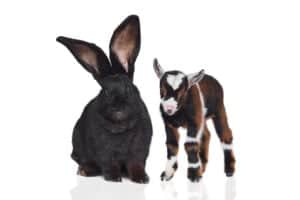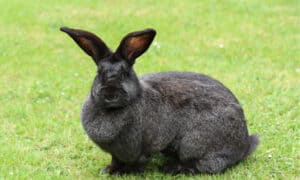The eastern cottontail (Sylvilagus floridanus) is a common sight in gardens across the Americas. They can be found from southern Canada to northern South America, and are prevalent in the eastern United States, as well as parts of Arizona and New Mexico. With territories of up to 9 acres per cottontail, they have adapted to live in rural, suburban, and even urban areas.
But all of these areas come with their own threats. Eastern cottontails are herbivores that eat a variety of grasses, clover, dandelions, and vegetables. Because they are herbivores, they are at the bottom of the food chain and are a popular meal for many species including weasels, ferrets, wolves, coyotes, owls, hawks, and other birds of prey.
Cottontails are small and aren’t equipped with large claws or any impressive ways to defend themselves against these hungry carnivores. Since they lack this ability to successfully fight off predators, they rely on speed. Cottontails have strong back legs and big, powerful feet that propel them swiftly forward. As a result, they can run up to 18 miles an hour to evade threats. While they are usually seen hopping casually, cottontails can leap 10-15 feet at a time when they need to move quickly.
But being fast will only get a cottontail so far — they need other tools in their arsenal to stay alive. In addition to speed, here are four other ways that rabbits evade predators.
1. Unpredictability
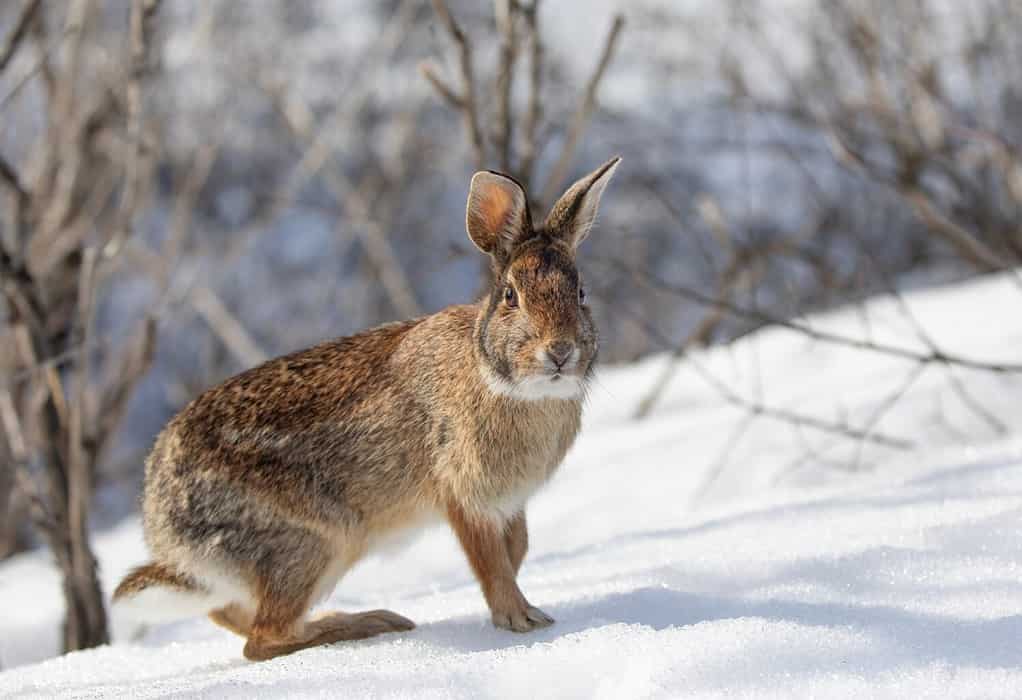
Hares are faster than eastern cottontails and can reach speeds of up to 45 miles per hour.
©Jim Cumming/Shutterstock.com
While speed is important, there are plenty of predators that are even quicker on their feet (or wings). For example, a coyote can run 35-43 miles per hour when in pursuit of prey. When it comes to aerial threats, red-tailed hawks have been clocked at 120 miles per hour when diving to catch prey. Great horned owls have a flight speed of 20-40 miles per hour.
Since all of these animals are quicker than a cottontail, the cottontails have to get creative. Instead of just running in a straight line and trying to outpace predators, cottontails will run in an unpredictable zig-zag pattern to confuse their pursuers. This also helps break its scent trail, so predators have a harder time tracking where the rabbit went. The cottontail continues this pattern until it reaches a good hiding place, or the predator loses the trail.
2. Standing Up
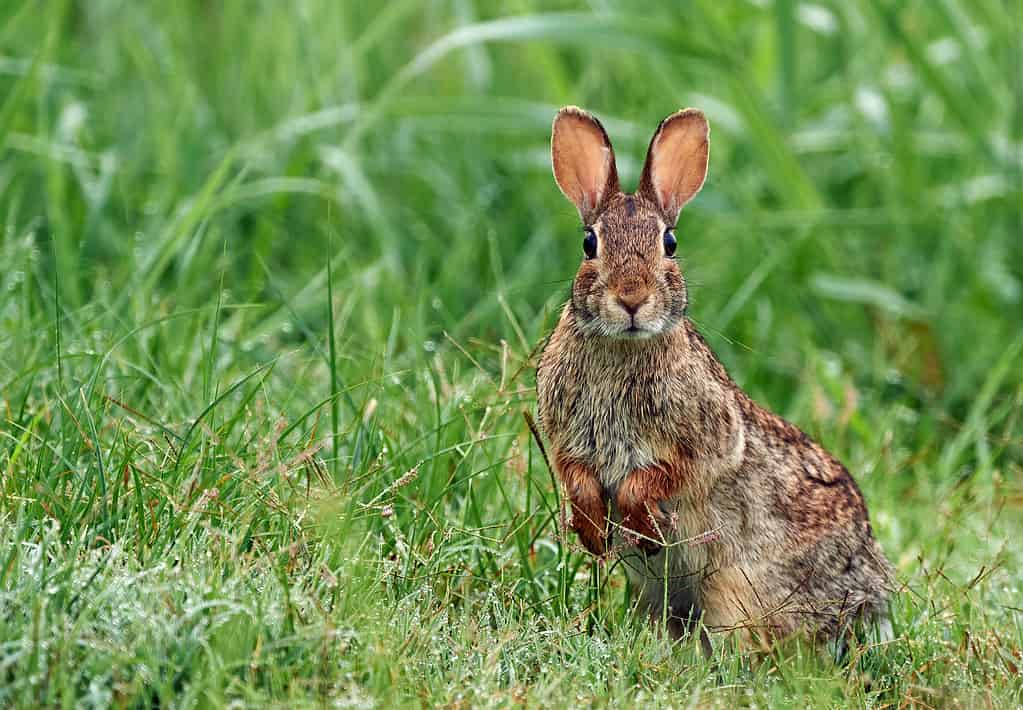
Eastern cottontails have an average shoulder height of 7-9 inches, while their ears can be up to 3.5 inches in length.
©ArCaLu/Shutterstock.com
The best way to evade predators is to not let them get close. Eastern cottontails often stand on their hind legs to watch and smell for predators such as coyotes, birds of prey, foxes, and domestic animals like dogs and cats. Cottontails are far-sighted, so they can see long distances well. They also have great eyesight in the dark. This is important as cottontails are crepuscular, meaning they are most active at dusk and dawn when the light isn’t strong. Since their eyes are high up on the sides of their heads, they have nearly 360-degree vision, allowing them to see predators approaching from almost any direction.
Standing up also lets cottontails smell what is in their vicinity. Cottontails have a well-developed sense of smell that is about 20 times better than a human’s. This is thanks to the nearly 100 million scent receptors in their noses, that allow them to smell predators from miles away and sniff out food, even if it is underground.
3. Camouflage
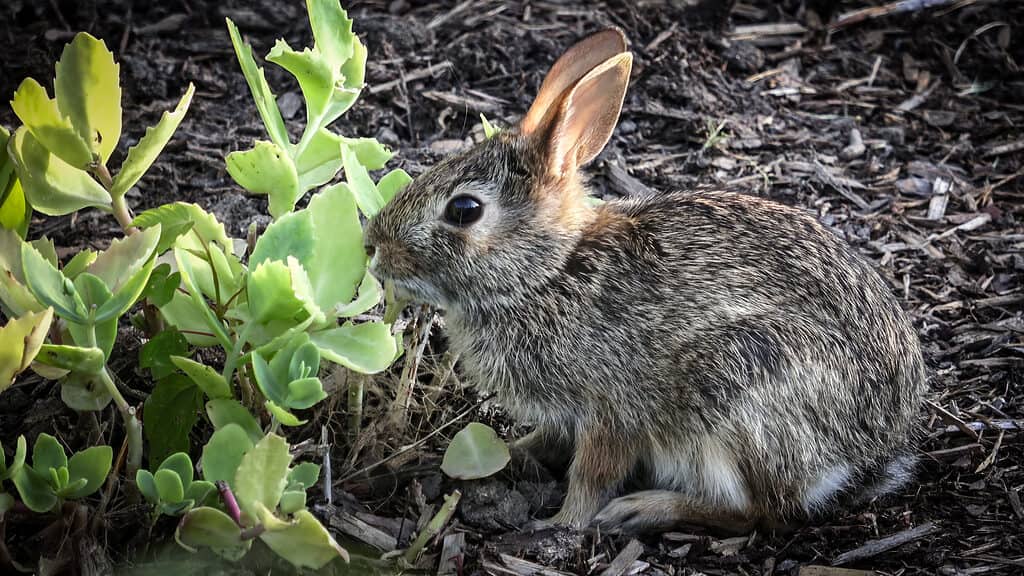
Eastern cottontails have no scent for the first week of their lives, which helps prevent predators from locating cottontail nests.
©Labrynthe/Shutterstock.com
Another way to evade predators is to hide in plain sight. Eastern cottontails have grey-brown fur that blends in with vegetation, particularly dry leaves or sticks. Their fur is gradient in color, which helps them blend in with the forest floor or meadow grasses. When a rabbit senses a predator, it freezes in place and remains motionless to avoid drawing attention. This lack of movement, coupled with their camouflage, can make them nearly invisible to predators. Cottontails will also flatten low to the ground to make themselves even more difficult to locate. They will remain motionless like this until a predator or threat gets too close, at which point the cottontail will flush from their hiding place and take off running.
4. Degloving
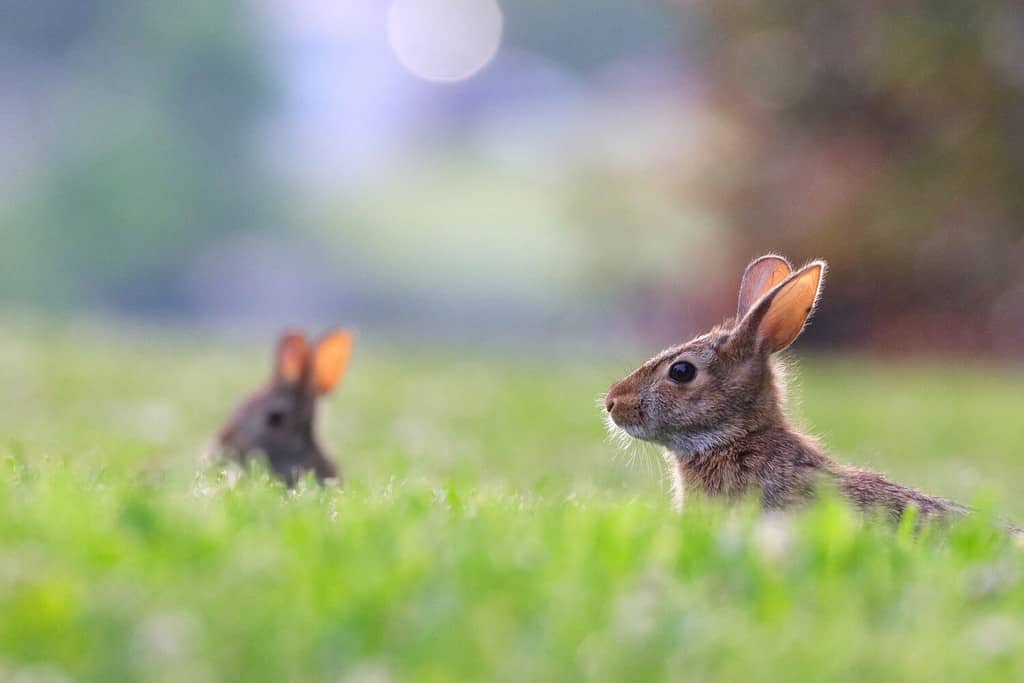
Because eastern cottontails are vulnerable to so many predators, their average life expectancy in the wild is just 15 months.
©Wirestock Creators/Shutterstock.com
If a cottontail doesn’t manage to evade a predator, there is one last adaptation that may help them get away. Cottontails’ skin is incredibly thin like tissue paper, and peels off of their body easily. If a cat or dog manages to get ahold of the rabbit’s skin, the skin will peel off, leaving a membrane surrounding their muscles. This is called degloving. While painful, degloving allows the cottontail to escape, leaving a predator with just a flap of skin.
While degloving often allows the cottontail to escape, it is not without risks. Degloving wounds are extremely susceptible to infection. Additionally, the stress of the injury alone can often send the cottontail into shock, or even kill it. If a rabbit is found with a degloving injury, it should be taken to a licensed wildlife rehabilitator for care if possible. One study found that orphaned eastern cottontails with degloving injuries are less likely to survive than ones without.
The photo featured at the top of this post is © Rabbitti/Shutterstock.com
Thank you for reading! Have some feedback for us? Contact the AZ Animals editorial team.





